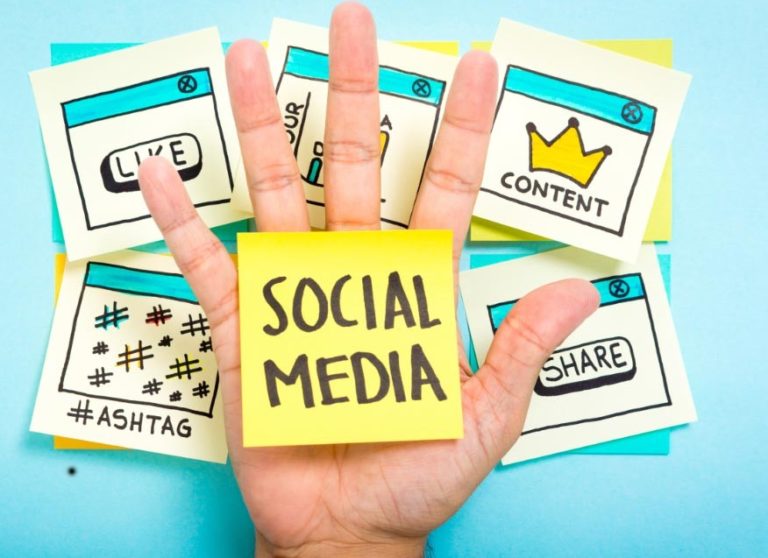The integration of social media has emerged as a powerful tool to use in the classroom. Educators are using social media to engage students, foster collaboration, and create an interactive learning experience for students. As technology continues to shape the way we communicate and interact with one another, educators are jumping on board with new social media trends in hopes of enhancing an immersive learning experience for students.
While utilizing social media in the classroom comes with plenty of advantages, it’s also important to understand the potential drawbacks. When integrated purposefully, exploring new social media trends can be a valuable way to strengthen the connection among students.
Benefits of Using Social Media in Your Class
Integrating social media into the classroom brings a myriad of benefits. Here are a few key benefits to consider.
Can Spark Student Engagement
Social media platforms provide a space for students to interact, collaborate, and have discussions. It also gives students the opportunity to collaborate on projects and participate in live chats with both their peers and educators. Since social media is in real-time it helps to foster a sense of connection making learning more engaging and relevant to students’ lives. Additionally, it’s beneficial for students who want to participate in class but are too shy to. If they’re too scared to share their opinions in person, they can tweet them, make an Instagram reel, or post a photo describing their thoughts and opinions.
Harnesses Students’ Digital Familiarity
Social media is something students are very familiar with and is something they spend the majority of their time using. By taking platforms like Instagram and TikTok which is something students are already using and connected to and integrate them into your lessons, you can ensure you will resonate with students. It also eliminates the time you it takes to teach students how to navigate their way through a new tech tool or app because students will already know how to use the platform, most likely more than you do.
Facilitates Connections Beyond the Classroom
Another advantage of using social media in the classroom is its ability to collaborate with people from across the globe. Facebook groups, collaborative Twitter projects, and Google Meets are just a few platforms that enable students to interact in real time with others from different parts of the world. These global connections help to foster collaboration and cultural exchange, helping students gain a broader perspective.
Negative Effects of Social Media to Watch For
While social media offers many benefits, it’s also wise to be aware of the potential negative effects of the drawbacks that social media can have on students. Here are a few things to watch out for.
Distraction/Reduced Attention Span
A significant negative effect that can arise from extensive use of social media is feeling distracted and having a reduced attention span. The constant influx of notifications and updates can disrupt students’ concentration. Social media also encourages multitasking where many students find themselves engaging in both academic and social media content at the same time, this can make it hard to absorb and retain information. Not to mention, social media’s short-from content and instant interactions can contribute to a shorter attention span, making it hard to engage more deeply in complex material.
Social Comparison Affects Students’ Self-Esteem
Social media is a place where students watch their peers post about their lives, what they are doing on the weekend, and where they are going on vacation. It’s also full of “influencers” who portray their perfect lives for all to compare. This can have a major negative impact on a student’s self-esteem.
Cyberbullying
Social media can lead to cyberbullying, which is a type of bullying that happens online. This can include posting or sharing negative or mean content about someone else. This embarrassment and humiliation can have lasting effects on someone and may even carry into adulthood.
New Social Media Trends to Try
Trends tend to evolve very quickly, so it’s essential to stay up-to-date on the new social media trends that are happening right now. Here are a few trends to explore in your classroom.
Short-form Video Content
Short-form media content like TikTok and Instagram Reels is another popular social media trend that can be used in the classroom to help motivate and engage students. Today’s students gravitate towards quick, digestible information. These platforms just mentioned cater to shorter attention spans making learning more enjoyable for students. Students can create short instructional videos, summaries, or engaging content that is on trend, concise, and visually appealing.
Microlearning
Microlearning, much like short-form video content, caters toward shorter attention spans breaking information up into smaller chunks so it’s easier to remember. This approach is also for students who only have a few minutes to spare. Social media platforms are great at making this content (think-short-videos, quizzes, infographics) and can enrich students learning.
AI- Powered Learning
AI-powered learning is a cutting-edge educational trend that uses artificial intelligence to help tailor teaching methods to individual students. By analyzing students’ data, it ensures a personalized learning experience that can promote engagement and academic success. It also can transform traditional teaching methods and enhance the educational landscape in classrooms, making it a compelling trend to explore.
Podcasting
Podcasts are immensely popular, and educators can jump on this trend by having students create an educational podcast or a podcast specific to the class they are taking or a specific subject or content they are learning.
Gamification
Platforms like Quizlet, Quizizz, and Kahoot gamify students’ learning experience through social media by creating interactive quizzes and games that make learning interactive and fun and keep students engaged.
Social media has made it simple to connect with others, offering students a platform to express themselves. While it’s essential to be mindful of the potential negative effects social media can have, the benefits far outweigh the drawbacks. By staying informed of emerging social media trends, you can create a dynamic learning environment where students are engaged and motivated to learn.




